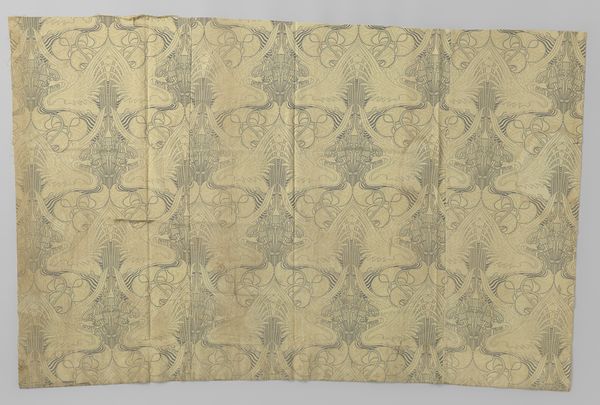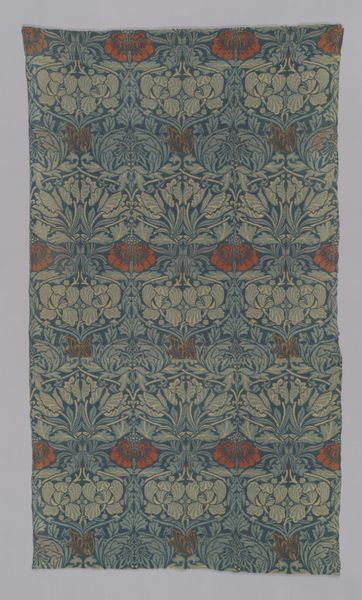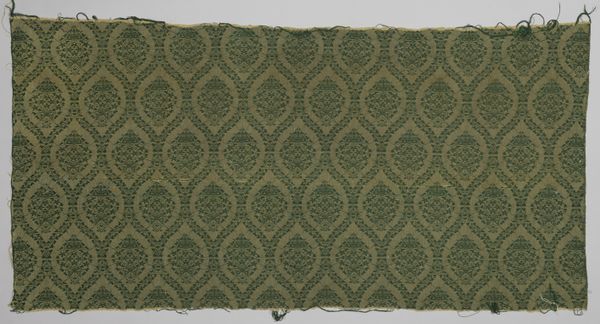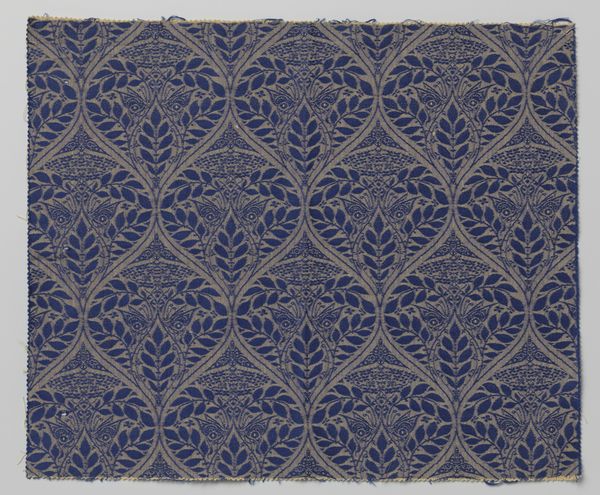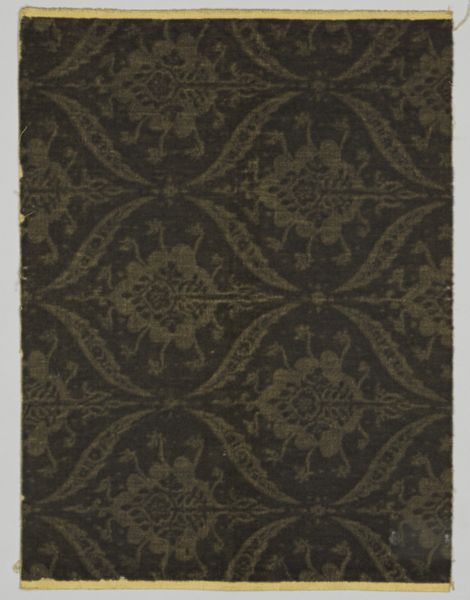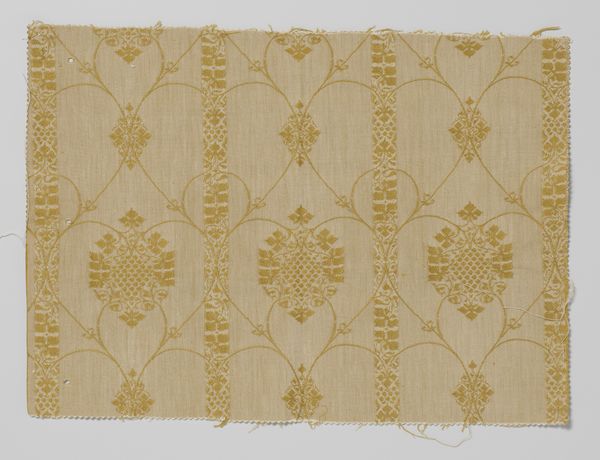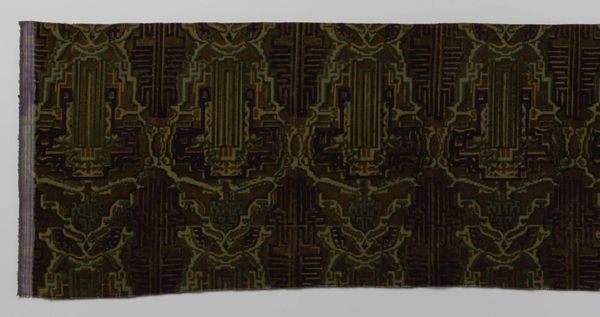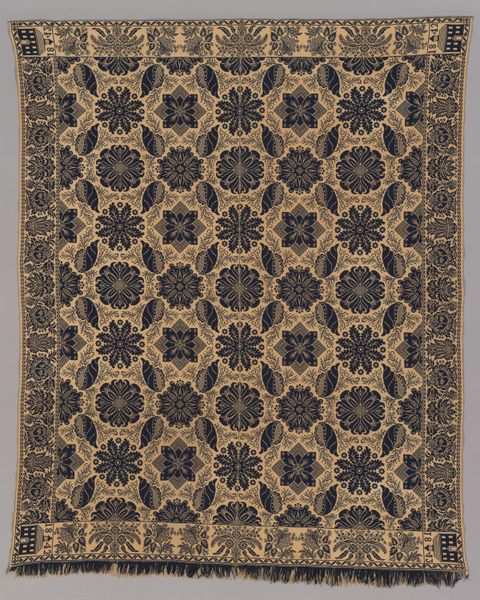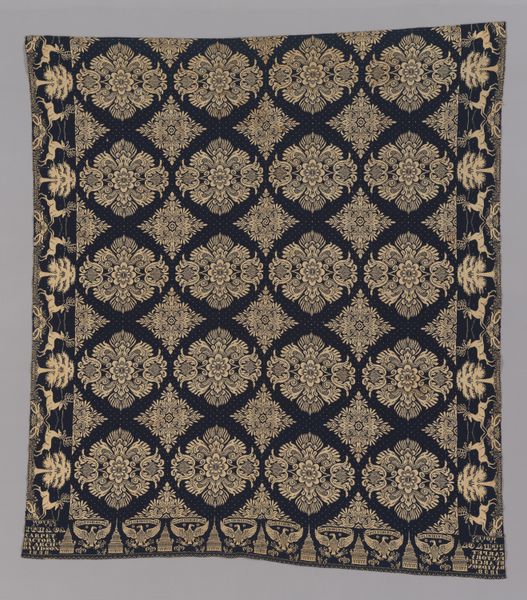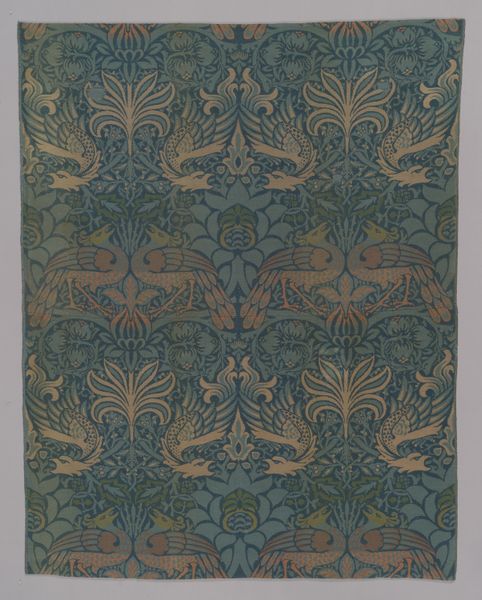
Bespanningsstof met hyacinten, groene inslag op beige ketting c. 1909 - 1924
0:00
0:00
theonieuwenhuis
Rijksmuseum
mixed-media, weaving, textile
#
natural stone pattern
#
mixed-media
#
art-nouveau
#
pattern
#
weaving
#
textile
#
pattern making
#
fashion and textile design
#
hand-embroidered
#
fabric design
#
repetition of pattern
#
pattern repetition
#
textile design
#
imprinted textile
#
layered pattern
Dimensions: height 46.0 cm, width 65.0 cm
Copyright: Rijks Museum: Open Domain
Theo Nieuwenhuis designed this furnishing fabric with hyacinths using a green weft on a beige warp sometime in the late 19th or early 20th century. The Netherlands was experiencing an Arts and Crafts movement, embracing artisanal production methods in response to industrialization. The stylized hyacinth pattern, repeated across the fabric, reflects a broader European interest in organic forms and the decorative arts and shows a rejection of academic art. The muted color palette and the naturalistic subject matter also suggest a desire for more understated, nature-inspired design in the home. Textile design during this period served an important social function, connecting art with everyday life and promoting good design to a wider audience. To truly understand this fabric, we might investigate the specific workshops and artistic communities in which Nieuwenhuis was involved. Research into contemporary design journals and exhibition catalogues would help to contextualize this textile within the broader debates about art, craft, and the social role of design at the time.
Comments
No comments
Be the first to comment and join the conversation on the ultimate creative platform.

